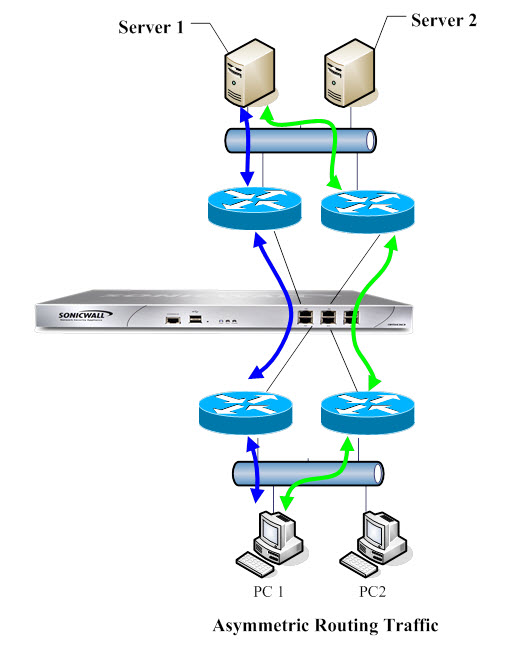
Any network appliance that performs deep packet inspection or stateful firewall activity must “see” all packets associated with a packet flow. This is in contrast to traditional IP routing in which each packet in a flow may technically be forwarded along a different path as long as it arrives at its intended destination — the intervening routers do not have to see every packet. Today’s routers do attempt to forward packets with a consistent next-hop for each packet flow, but this applies only to packets forwarded in one direction. Routers make no attempt to direct return traffic to the originating router. This IP routing behavior presents problems for a firewall cluster that does not support asymmetric routing because the set of Cluster Nodes all provide a path to the same networks. Routers forwarding packets to networks through the cluster may choose any of the Cluster Nodes as the next-hop. The result is asymmetric routing, in which the flow of packets in one direction go through a node different than that used for the return path. This difference in flow causes traffic to be dropped by one or both Cluster Nodes as neither is “seeing” all of the traffic from the flow. See Figure 10.
Figure 10. Asymmetric routing
In Figure 10, PC1 communicates with Server1, two-way traffic passes through different routers, that is, some packets of same connection go through blue path, some go through green path. On such deployment, the routers may run some redundancy route protocol or load balancing protocol; for example, Cisco HSRP protocol.